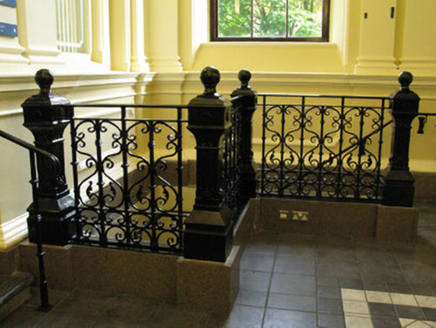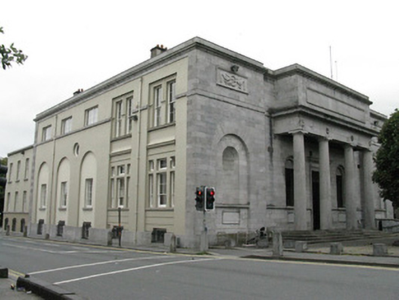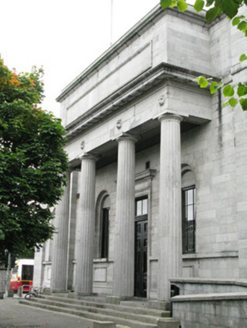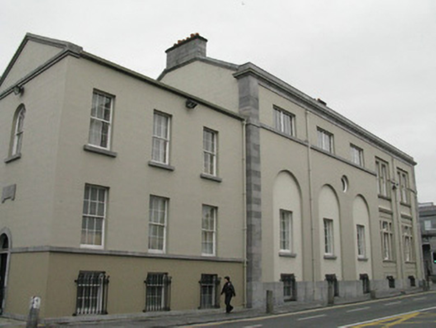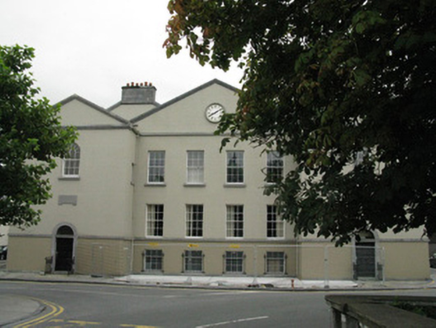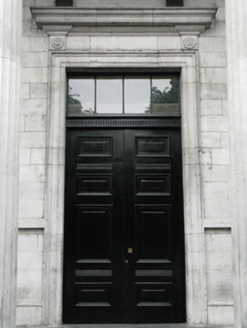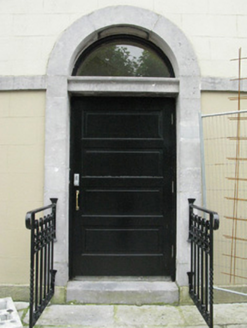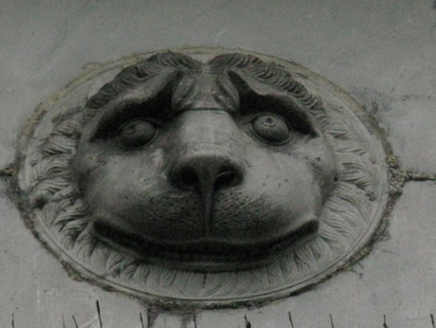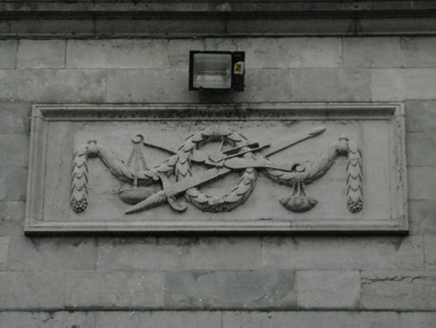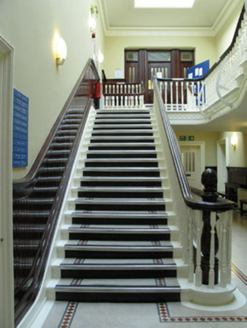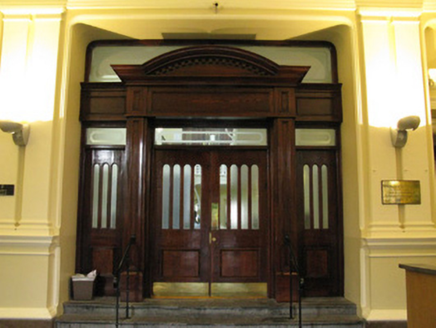Survey Data
Reg No
30314011
Rating
National
Categories of Special Interest
Architectural, Artistic, Historical, Social
Previous Name
Galway County Courthouse
Original Use
Court house
In Use As
Court house
Date
1810 - 1820
Coordinates
129678, 225552
Date Recorded
18/09/2008
Date Updated
--/--/--
Description
Freestanding court house, built 1815, having five-bay single-storey front façade with slightly advanced end bays, and projecting Doric-style portico, with five-bay two-storey over half-basement side elevations, and slightly recessed lower three-bay two-storey over half-basement returns forming two-storey advanced pedimented end-bays of rear, flanking four-bay two-storey over basement pedimented recessed section. Main rear pediment has clock to tympanum with moulded render surround. Hipped slate roof with central roof-light, carved limestone parapet, rendered chimneystacks, cast-iron rainwater goods, and with moulded limestone cornice to front and side elevations of main block. Ashlar limestone front façade with cut-stone plinth continuing to side elevations of main block, end bays of front façade have round-headed recesses with niches and trophies of justice in relief above plat band, and all window openings and niches have rectangular panels to aprons. Plat band becomes moulded cornice to portico. Portico has dentillated architrave, panel to frieze and rolled cornice to entablature over lower frieze with lions' head decorations above columns. Painted lined-and-ruled rendered walls to side and rear elevations, having limestone quoins to main block, plat band to mid-level of upper windows, continuing as cornice to lower block, with further cut-stone eaves course to sides of main block. Front two bays of side elevations of main block are articulated by square-headed recesses, with channelled render to ground floor, and ground floor of other bays have round-headed recesses. Limestone plaques between floors of advanced rear bays. Round-headed windows flanking main entrance, with recessed surrounds and blank tympanums. One oculus to back bays of main block, round-headed window openings to upper floor of advanced rear bays, and square-headed window openings elsewhere, all with tooled limestone sills, front façade and first floor of rear block having cut-stone sill course. Fixed timber-framed twelve-pane windows to front façade. Timber sliding sash windows elsewhere, upper floors of rear block and ground floor of rear bays of main block having six-over-six pane windows, three-over-six pane to basement of rear block and to upper floors of advanced rear bays, openings of latter having fanlights. Basement to main block has three-over-three pane windows. Paired window openings to front bays of side elevations of main block, having rolled render surrounds and four-over-four pane windows, tripartite to ground floor with overlights and moulded render cornices. Multiple-pane double fixed windows to top floor of rear bays of main block. Square-headed door opening to main entrance, with carved stone doorcase comprising roll-moulded surround, surmounted by capitals with roundel motifs, moulded cornice, and having double-leaf timber panelled doors with dentillated cornice lintel and paned overlight. Round-headed door openings to end bays of rear elevation, having tooled limestone surrounds and voussoirs, moulded lintel, timber panelled door, fanlight, and fronted by limestone step and decorative wrought-iron railings. Interior features include ornate staircase with turned bannisters and gallery. Doorway having timber doorcase with panelled pilasters and dentillated segmental-headed pediment and timber-glazed side-lights and panelled double-leaf door, approached by moulded limestone steps with wrought-iron handrails, all flanked by paired rendered pilasters. Polished granite steps with cast-iron hand-rails to basement stairways.
Appraisal
This imposing public building was designed in 1812 by Sir Richard Morrison, who had supervised the building of the county jail on the site of the former Franciscan Abbey. The portico was originally topped by a carving of the royal coat of arms of the house of Hanover, this being removed after Independence and re-erected in the grounds of the university. Located in a central area and across the bridge from the former jail, the courthouse retains many striking features such as the Doric portico with its unusally heavy entablature. Further interest is added by the varied roofscape and by the fact that all facades are different, with a wide variety of window types, doorways and cut-stone details. The main façade is enlivened by the niches set in blank arches and the very fine lions' masks details.
